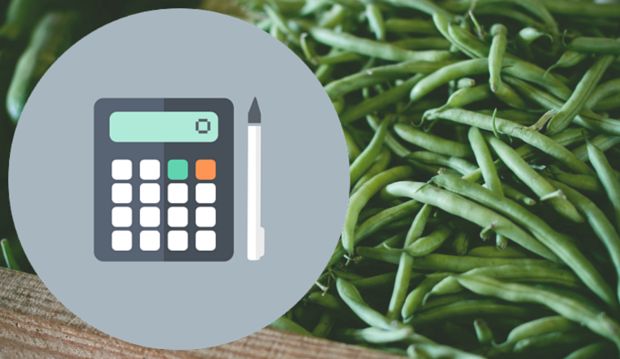How To Calculate Food Cost In A Restaurant

You could have the best restaurant in town with 5 star reviews and a loyal customer base, but if you’re pricing a plate at $10 that costs you $12 to serve, you won’t succeed. So how do you calculate food cost percentage? Calculating the correct number for your restaurant is imperative for restaraunt profitability. At the basic level the formula is food cost = cost of food sales / food sales. But nothing is ever as simple as it sounds.
Step 1: List ingredients
List all of the ingredients in your kitchen, from the ketchup to the cooking oil, organized by the dishes they are used in. Next to them note the portions used in each dish (don’t forget that garnish or pat of butter for toast.)
Step 2: Calculate cost
Calculate the cost of an ingredient in each dish. This is where it gets a little tricky. For example, consider the tomato. Say the tomato costs $.30 each and a sandwich uses 2 slices of tomato. If a typical tomato get you about 8 slices, each slice would cost you about $.03. But if you have a smaller tomato that only gives you 7 slices, this number won’t be totally accurate. So keep in mind these calculations are as precise as you could make them, but unfortunately not totally perfect.
Step 3: Add it up
Sum up the total food cost of each dish. Don’t include labor to prepare or serve the dish.
Step 4: Food cost percentage
Determine your food cost percentage by dividing how much the food costs are for a dish by how much the dish is priced on the menu. For example, if you have a grilled cheese and tomato sandwich selling for $9 and the food cost is $3, the food cost percentage is 33%. Understanding the food cost for each item on your menu will help determine what to charge.
Step 5: Other Factors
Your food cost is just one factor in running a profitable restaurant. Overhead and fixed costs need to be taken into consideration. Labor costs are a major factor. Knowing what you need to charge versus what the competition is doing is also important. There are many variables, but make no mistake, knowing your food cost is a huge first step toward restaurant profitability.
Check these calculations regularly to make sure your food cost percentage is consistent. If it is higher it could mean your waste is excessive or you might need to adjust your menu pricing. We have written a great article on how to reduce your food costs, from portion control to waste logs.
